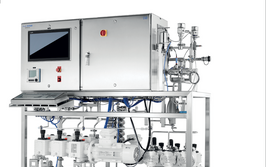Codes, Drugs, and Rock ‘n’ Roll
Europe has set the stage for safer supply chains with its Falsified Medicines Directive. Next, the spotlight could fall on using serialization to boost patient centricity.
If the pharmaceutical industry was a 70s rock band, drug discovery would be the singer: high profile but temperamental (and doesn’t always turn up). And the manufacturing and supply chain functions would be the bass player: essential but not typically a source of creativity or innovation (at least in the eyes of most executives).
The wave of new drug traceability laws might change that perception as manufacturing and supply chain function gets pushed into the spotlight. The European Union’s Falsified Medicines Directive (FMD) and its similar counterparts worldwide (such as the Drug Supply Chain Security Act in the US) were drafted primarily to help prevent counterfeit medicines from reaching patients. The last pieces of FMD were published in February and have set off a three-year compliance period. There isn’t space to discuss the wider nuances of FMD here, but there are two key packaging elements: tamper-evidence and unit-level traceability. All packs of prescription medicines must be sealed at the point of manufacture – surprisingly not a requirement before now – and must carry a scannable, pack-specific code, which FMD calls a safety feature. This 2D Datamatrix code must contain batch number, expiry date, a product identity code and a pack identity code.
These codes will allow drugs to be traced and checked across the EU using the European Medicines Verification System (EMVS), including during dispensing. Hopefully, the system will reduce counterfeiting by enabling rogue codes to be spotted – thus preventing harm and saving lives. Although no system can guarantee a watertight barrier against fakes, EMVS will greatly hamper the ability of counterfeiters to exploit the legitimate supply chain.
Machine-readable packs will also mean safer hospitals. Did you know that medication errors cause more harm than fake drugs do? Many incidents can be attributed to manual data entry mistakes or misreading of labels. Hospital practices mean the original coded pack may not always be present, but FMD will be an extra safety net for many key medicines. In the early hours of the morning, a handheld code scanner is always wide-awake, even if the nurse using it to check the strength and identity of a dangerous intravenous drug is tired and busy.
Keeping patients safe is the priority, but FMD and the new serial numbers required on packs could also boost efficiency. Today, the pharma supply chain picture is pixelated. Thousands of packs with the same batch and expiry data are effectively indistinguishable clones. With the advent of FMD and the serialization requirement, we will gain unit-level vision, whereby each box or bottle coming off the production line will be unique. Because those codes are checked during dispensing, FMD should enable quicker and more focused recall of only specific packs (rather than the whole batch) – overall resulting in less waste and a faster recall response. Greater precision may also lower the risk of drug shortages, which can happen today following a full batch recall. For pharmacists, recalls will be managed in a more automated way with less impact on pharmacy workload. Beyond safety, there may be other, albeit more contentious, benefits to FMD too...
I believe that the commercial future of pharma lies in blending products and services in a more patient-centric way. FMD may provide a new route to that goal. Those soon-to-be-ubiquitous Datamatrix codes are easily visible and the data they contain is unencrypted – meaning they are potentially readable by any patient with a smartphone. The next logical step for FMD – as we digitize the supply chain – is to get patients involved. Coded packs provide a route to delivering approved information direct to a patient’s phone, such as an electronic version of the patient leaflet. We all know that patient information can often be ignored (particularly small print) so why not send a reminder of safety-critical patient information as well? A dosage reminder service or prescription refill alerts might also be useful. Greater convenience and better information should lead to increased patient engagement with medical treatment and, hence, better adherence and improved outcomes.
Linking medicine codes to opt-in benefits and services could also lead to new business models. Safeguards will definitely be needed, and a flexible regulatory approach will be important, but we have an opportunity to add real value for patients. We don’t need infeasible new technology – we already have the phones in our pockets. Investment by our technical operations colleagues in software, hardware, and services to get compliant with FMD means that the bass player is already tuning up.
Like most 70s rock bands, we in pharma find writing new hits difficult – and putting codes on boxes won’t help us to find innovative drugs. But with some imagination, it might increase the benefit of our existing ones – for us and our patients. Playing the old songs better could be a handy tactic while our new product pipelines go in and out of rehab.
Mark Davison is Principal Consultant at Blue Sphere Health Ltd, UK.


















